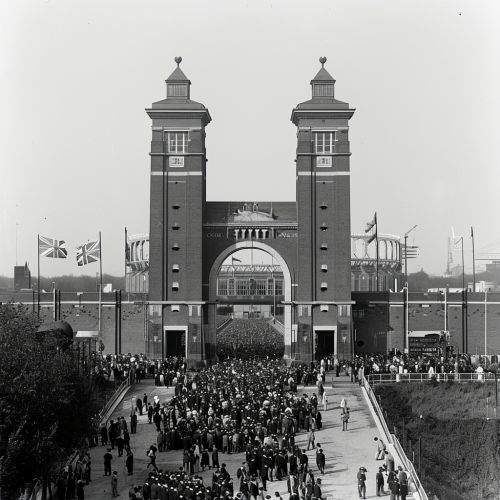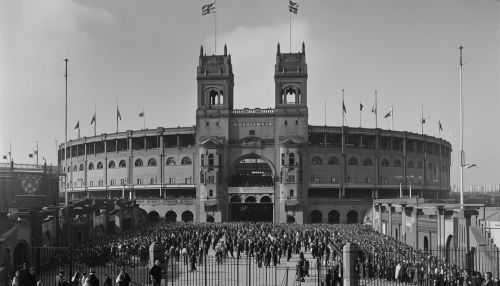Wembley Stadium (1923)
History
The original Wembley Stadium, often referred to as the "Old Wembley", was a stadium located in Wembley Park, London. It was opened on 28 April 1923 and demolished from 2002–2003, to make way for its successor, the new Wembley Stadium.


The stadium was designed by architects Sir John Simpson and Maxwell Ayrton, and the construction was undertaken by Sir Robert McAlpine. The total cost of the project was £750,000 (equivalent to £34,000,000 in 2016). The stadium was a part of the British Empire Exhibition, which was a colonial exhibition held at Wembley Park in 1924 and 1925.
Architecture
The most distinctive feature of the original Wembley Stadium was its Twin Towers, which became iconic symbols of the stadium. The towers were 126 feet (38 m) high and were made of reinforced concrete. The stadium had a circumference of 3/4 mile and could accommodate about 127,000 spectators, with 68,000 seats and standing room for 60,000.
Events
The stadium was best known for hosting the FA Cup Final, which it did annually from 1923 until 2000. The first final held at the stadium was the "White Horse Final" between Bolton Wanderers and West Ham United. The match was attended by King George V, and it was the first FA Cup Final to be broadcast by the BBC.
In addition to football, the stadium was also used for other sports such as rugby league, and for concerts, including the famous Live Aid concert in 1985. It also hosted the 1948 Summer Olympics and the 1966 World Cup Final.
Legacy
The original Wembley Stadium was one of the most famous stadiums in the world, and its Twin Towers were recognised globally as an icon of English football. The stadium's history and its role in English sporting culture were significant, and its demolition in 2002–2003 was met with a great deal of nostalgia.
